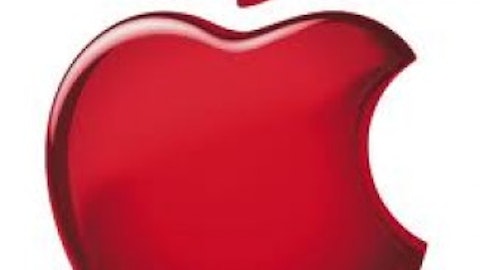
However, to modern-day investors it’s also come to represent an archaic instrument of the past that’s based on a stock’s per-share price rather than its market value — adding significantly weighting to components like IBM, which is valued at nearly $188 a share, and minimal importance to aluminum producer Alcoa, which is a touch over $8 a share. Furthermore, the Dow simply isn’t nimble enough to encompass all of today’s rapidly changing global industries.
Instead, investors today look to the S&P 500 (S&P Indices:.INX) for the best indication as to the health of the overall stock market and economy. The S&P 500 (S&P Indices:.INX) combines 500 selected companies into a market value (not share price) weighted index to give investors the best possible view of the true state of the U.S. stock market.
With this in mind, I propose to share with you 10 interesting and little-known facts about the S&P 500 that I’ve come across over the years as an investor. While some of these facts are merely “interesting and fun,” others can provide insight that can potentially make us better investors.
No. 1: I don’t think you can discuss interesting facts about the S&P 500 (S&P Indices:.INX) without first discussing what the inclusionary factors are that allow a company to be included in the index. According to S&P Indices as of June 2012, eligibility requirements included a market capitalization of $4 billion or greater, an annual dollar value traded to float ratio of 1.00 or greater, an average volume of 250,000 or more shares for a period of six months before its evaluation date, and being based in the United States. In other words, established and highly liquid U.S. companies in excess of $4 billion in market value.

Source: Prayitno, Flickr.
No. 2: The life span of a stock within the S&P 500 tends to be relatively short, all things considered. While there are numerous companies that have been around for “decades,” between the period when the S&P 500 index was officially formed in 1957 to its 50th anniversary in 2007, only 86 of the original 500 companies still remained. The other 414 had either gone bankrupt, been taken over, or been removed from the index. In that 50-year span, nearly 1,000 companies had been, at some point, added to the index.
Furthermore, calculations by noted Prof. Jeremy Siegel of the Wharton School demonstrate that purchasing each original company and holding them for those 50 years (included those that went through bankruptcy, buyout, or index removal) as compared with just buying an index fund would have netted you a better return of 88 basis points per year. That might not sound like a lot, but if you invested $1,000 in each strategy in 1957 you’d have made $84,000 more with the individual buy-and-hold strategy than with a straight index fund purchase. Let this be another reminder that buying and holding solid companies at reasonable prices is still the way to go for a happy retirement.
No. 3: In spite of the historical success of buy-and-hold investing, the allure of trading S&P 500 patterns does indeed get the better of some traders. With that being said, eight out of 12 months since 1971 have resulted in gains for investors. December and November are historically the S&P 500’s best months, with average returns of 1.7% and 1.5% since 1971 with September (not October despite popular belief) proving to be its worst-performing month historically, down 0.52%. Keep in mind, though, that trying to time the market based on these statistics has rarely worked out over the long run.

Source: Pixabay.
No. 4: Speaking of streaks and interesting patterns, since 1928 the S&P 500 has had more than 50 instances where it’s advanced at least eight days in a row. That figure drops to just 40 instances if the criterion is for a nine-day winning streak. In fact, the last time the S&P 500 has seen more than a nine-day winning streak is all the way back in 1995, despite the fact that it’s happened more than 20 times in history. By now I’m pretty sure you’re curious about what the longest winning streak ever has been for the S&P 500. I was, too, and discovered that the answer is 14 days in a row, set back in April 1971.
No. 5: Extrapolated back to 1929, the S&P 500 has had some pretty volatile years. According to historical data, the S&P 500’s biggest annual percentage gain of 45.02% occurred in 1954, while its worst annual performance ever was more recent in 2008 at negative 38.49%. Although these figures may appear notoriously close, buying and holding through all of the S&P 500’s peaks and troughs has resulted in an average annual return in excess of 10%. Can I once again get three cheers for buy-and-hold?
No. 6: It’s no secret that the ability to look up data via the Internet and make trades with a self-service broker has completely transformed the investing landscape. Although we all know this to be the truth, I haven’t before been able to locate specific data to encompass the magnitude of this change — until now.





